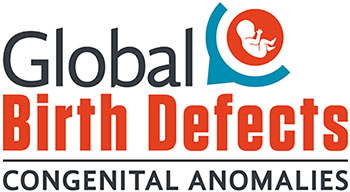February 11, 2019
The Birth Defect Surveillance Group, part of ZikaPLAN’s Work Package 8 (Disease Burden and Risk Assessment), announces the launch of the Global Birth Defects website.

The Zika epidemic highlighted the need to build stronger birth defect surveillance systems to improve birth defect prevention and the care of affected children, not only in response to Zika but also other risk factors. Birth defects affect at least 3% of babies in most populations around the world and surveillance is essential to measure the impact of the numerous risk factors that can affect fetal development in early pregnancy. Surveillance provides an evidence base for preventive public health interventions designed to mitigate those risk factors.
This initiative aims to improve and mainstream birth defect (congenital anomaly) surveillance, especially in low resource areas, which are most affected. The website offers a comprehensive, up-to-date inventory of available resources and associated tools for congenital anomaly surveillance and research that can be adapted to local needs and used to determine appropriate public health interventions.
The international committee behind the website is also busy creating a first-of-its-kind App for the description and coding of externally visible birth defects. This App will be freely available and is aimed at enabling frontline healthcare workers in resource-constrained environments to improve and expand their surveillance efforts. Once downloaded onto a mobile device, the App can be used offline, making it more practical for use in places where internet accessibility is limited or intermittent. The committee gathered in London on January 21 & 22, 2019 to finalize the content of this App. Field testing will take place in India, Africa, and Latin America later this year before final enhancements are made. Then the App will be widely released.
Look for updates on Twitter @GlobalBirthDfx
International Committee for Congenital Anomaly Surveillance Tools
- H. Dolk, EUROmediCAT, Ulster University, UK (Chair)
- I. Barisic, EUROCAT, Department of Genetics, Children’s University Hospital, Zagreb, Croatia
- L. Barlow, The Makerere University-John Hopkins University Research Collaboration, Uganda
- L. Botto ICBDMSR, University of Utah, USA
- E. Garne EUROCAT, Lillebaelt Hospital, Denmark.
- P Guatibonza, Latin American Collaborative Study of Congenital Malformations (ECLAMC), Colombia
- C. Halleux, WHO TDR, Geneva, Switzerland
- L. Holmes, Massachusetts General Hospital, Boston, USA and WHO TDR Advisor
- I. Orioli, Latin American Collaborative Study of Congenital Malformations (ECLAMC), Rio de Janeiro, Brazil
- N. Raina, World Health Organization, Regional Office for South East Asia (WHO SEARO), New Delhi, India
- D. Valencia, Centers for Disease Control and Prevention (CDC), Atlanta, USA